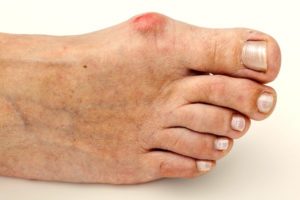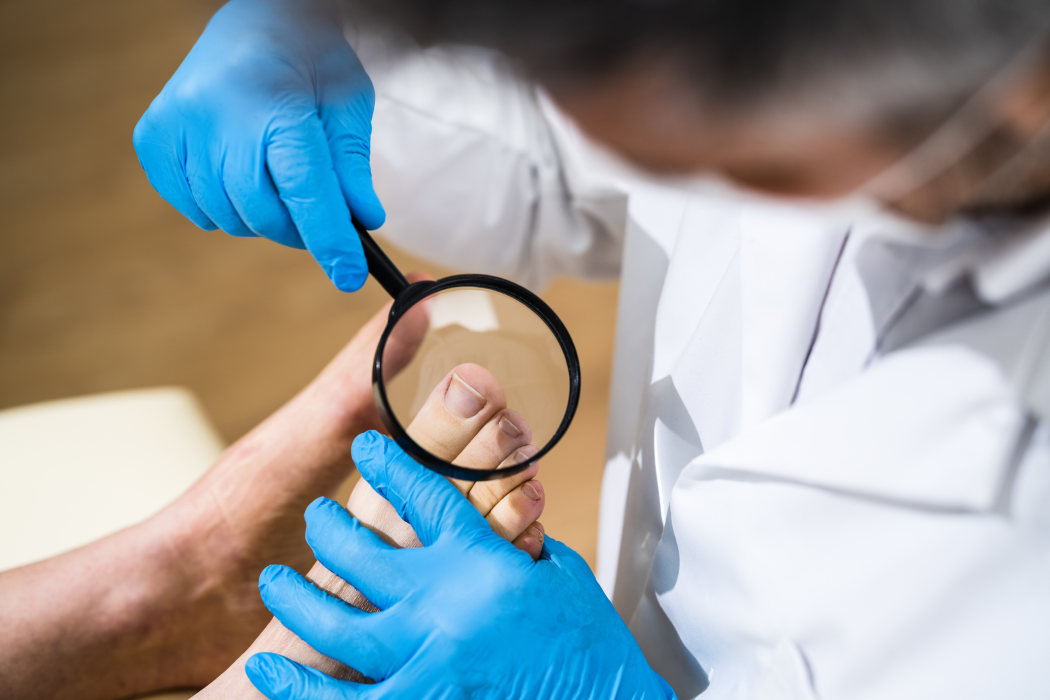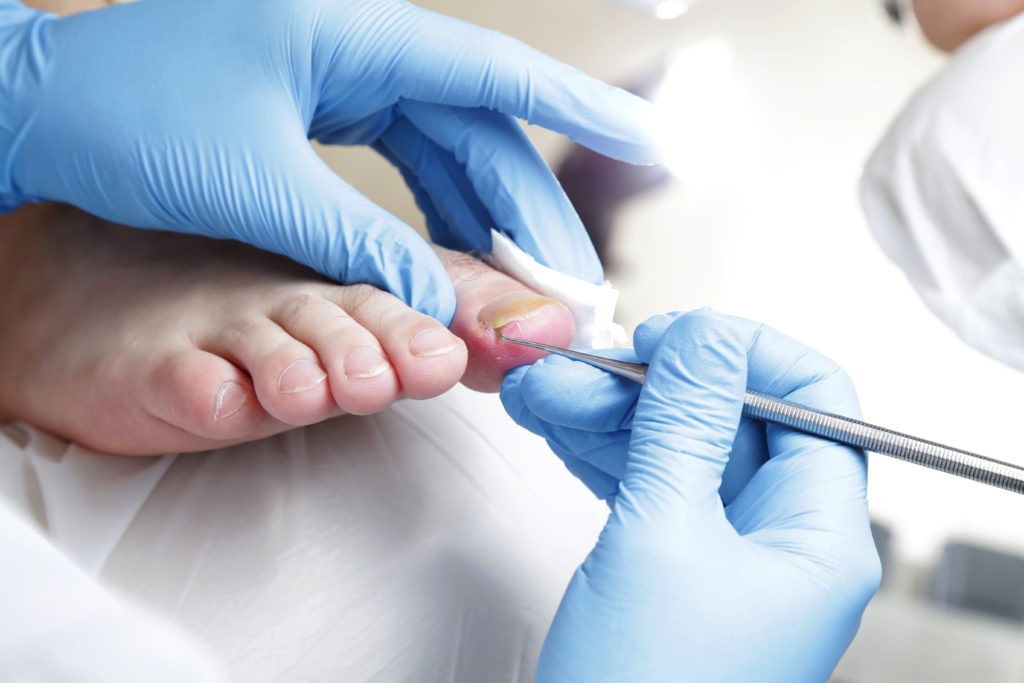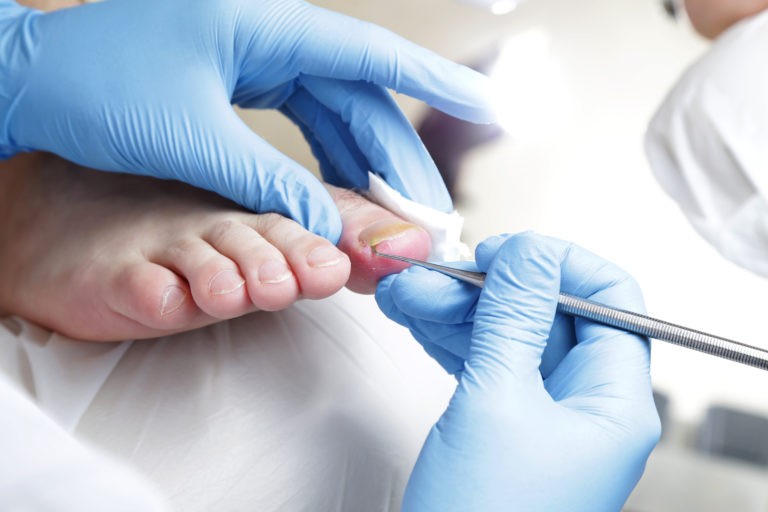Medically known as Hallux Abducto Valgus (HAV), the term ‘bunion’ describes a bony bulge that can develop over time on the inside of the big toe. The bulge is caused by a malaligned position of the big toe joint where the long bone (metatarsal) moves out towards the other foot and the connecting toe (phalanx) bends in on it, toward the other toes. Bunions tend to progressively worsen in ‘stages’ and become more prominent. As they do, the ligaments and tissues surrounding the joint stretch and contract accordingly, ultimately leaving the joint in a fixed position. Bony and arthritic changes can also occur within the joint. This means that bunions have different characteristics at different stages and the right management needs to be decided on a case-by-case basis.
Causes of bunions are numerous and vary greatly. Anything that squeezes or puts greater pressure and force through the big toe joint, like pointed shoes, may be a potential contributing factor. Often bunions can run in the family, are more prevalent in women than men, and are thought to be linked with an unstable function at the big toe joint. Other contributing factors include:

The biggest sign is the change in appearance (protrusion) of the big toe joint. You may also experience:
As the bunion progressively worsens, the big toe may push into the lesser toes. Over time, the toes may begin to overlap.
As bunions progressively worsen over time, starting treatment early is the key! If you’ve started noticing your bunion developing either recently or within the last couple of years, now is the best time to take action.We start by identifying the extent of the changes in the big toe joint. A treatment plan can then be implemented to reduce symptoms and limit future progression. Biomechanical and alignment issues will be identified. Periodic evaluation and x-rays may be advised or in some cases observation of the bunion is sufficient. Depending on the characteristics of your bunion, you may benefit from some of the following:
As bunions are often associated with other foot problems, treatment will also address any underlying issues that are identified. If the symptoms or the deformation is not reducible, surgery may be indicated.
.png)
This Mother’s Day, consider a practical, medically safe, and confidence-boosting gift: a professional KeryFlex nail restoration treatment. It’s a simple, effective, and medically safe way to instantly transform the appearance of toenails.

Tingling or numbness in your feet and legs during or after exercise can be an odd sensation. If you’re prone to experiencing it, the most common reasons are related to pressure on nerves or problems with your circulation.

It’s important to not only use an evidence-based treatment plan to help you get the best outcomes for your foot and leg pain, but to help you see the best results in the shortest time. That’s the reason we’ve invested in shockwave.

We treat a lot of ingrown toenails here at the Auckland Ingrown Toenail Clinic. So, with approximately 10% or more of the adult population harbouring a fungal nail infection, it’s not uncommon that we see many ingrown toenails where a stubborn nail fungus has also infiltrated the nail. So how can you tell, what can […]

While many of the cases we see here at the Auckland Ingrown Toenail Clinic are fairly standard, there are a few that vary greatly from the ‘norm’, and could have resulted devastating consequences if they had been left untreated under the hopes that the ingrown nail would “go away on its own”, something many people […]

They may be small, but verrucas, also known as plantar (foot) warts, are much more than just a minor annoyance. They can be painful to walk on and extremely persistent, making your day to day life a lot less pleasant or comfortable. As one of Auckland’s leading podiatry clinics that specialise in ingrown toenails, we […]

Ingrown toenails can be painful and uncomfortable, so identifying the ‘red flags’ of ingrown nails early on can be helpful in getting prompt treatment and reducing the risk of complications. So what are the top red flags you should be looking out for? One: Persistent Pain and Discomfort One of the most significant red flags […]

Dealing with an ingrown toenail can be a painful and frustrating experience, with many people opting to have ingrown toenail surgery to find lasting relief. But is ingrown toenail surgery painful? And if it is, is it really worth the discomfort? Do You Really Need Ingrown Toenail Surgery? The first thing you must consider when […]

For many Kiwis, ingrown toenails are a persistent and painful condition that significantly impacts their daily life. While some cases can be managed with conservative measures like trimming back the nail carefully, either at home or with the help of your podiatrist (recommended) there are instances where a more permanent solution is required. The Partial […]

Engaging in sports and physical activities can bring joy and numerous health benefits. However, just because you’re staying active, regardless of whether you’re doing it at a professional level or recreationally, does not mean that you’re immune to foot conditions like ingrown toenails. Ingrown toenails can be particularly bothersome when you live an active lifestyle, […]
Keeping your family on their feet and helping them to walk, run, play and exceed their goals is why we love getting up in the morning.
Ground Floor, One Health Building
122 Remuera Rd, Remuera
Auckland 1050, New Zealand
| MON - FRI | 7:30am – 6:30pm |
| SAT | 8:30am – 4:30pm |
| SUN | Some availability |
Make an Appointment
Online Schedule